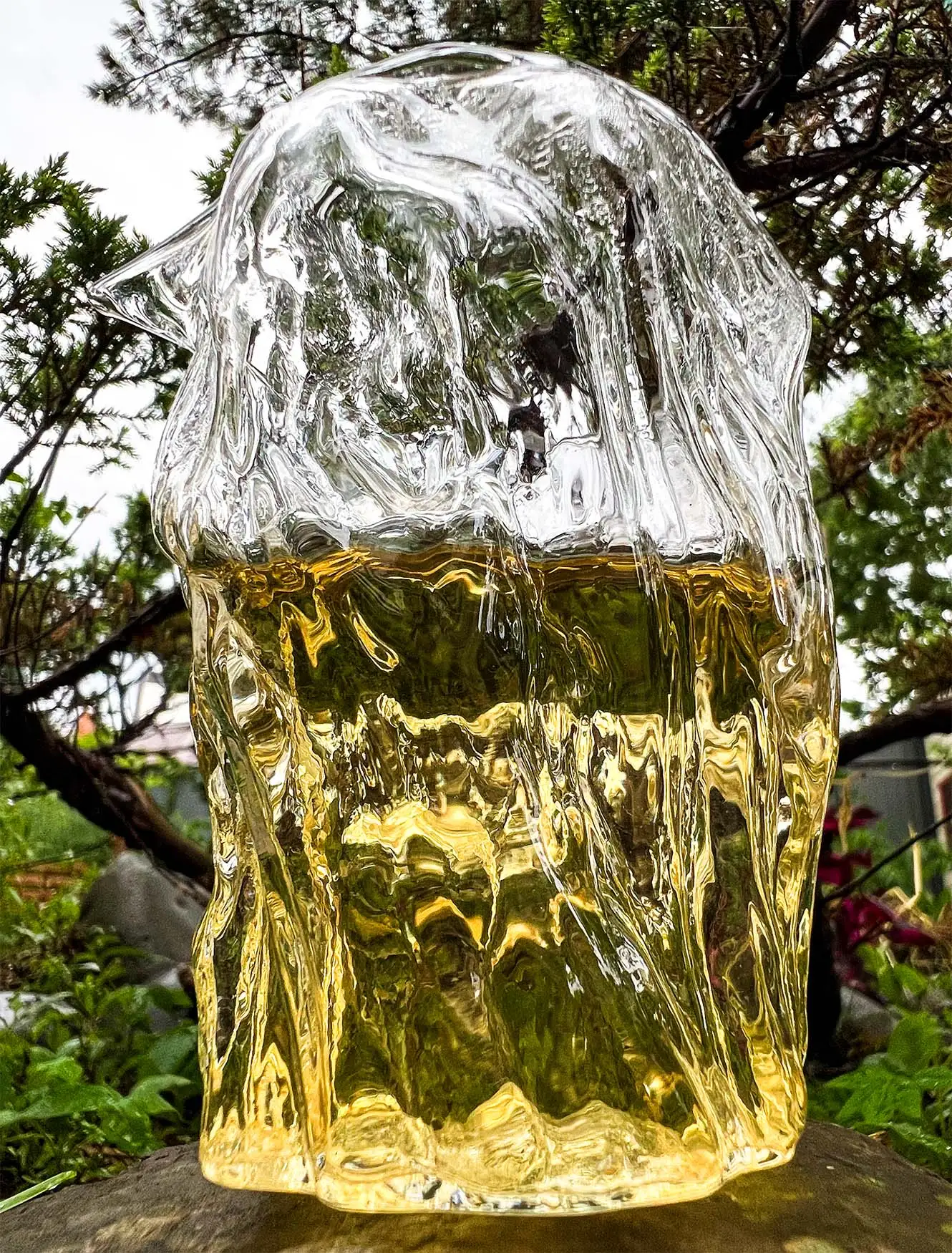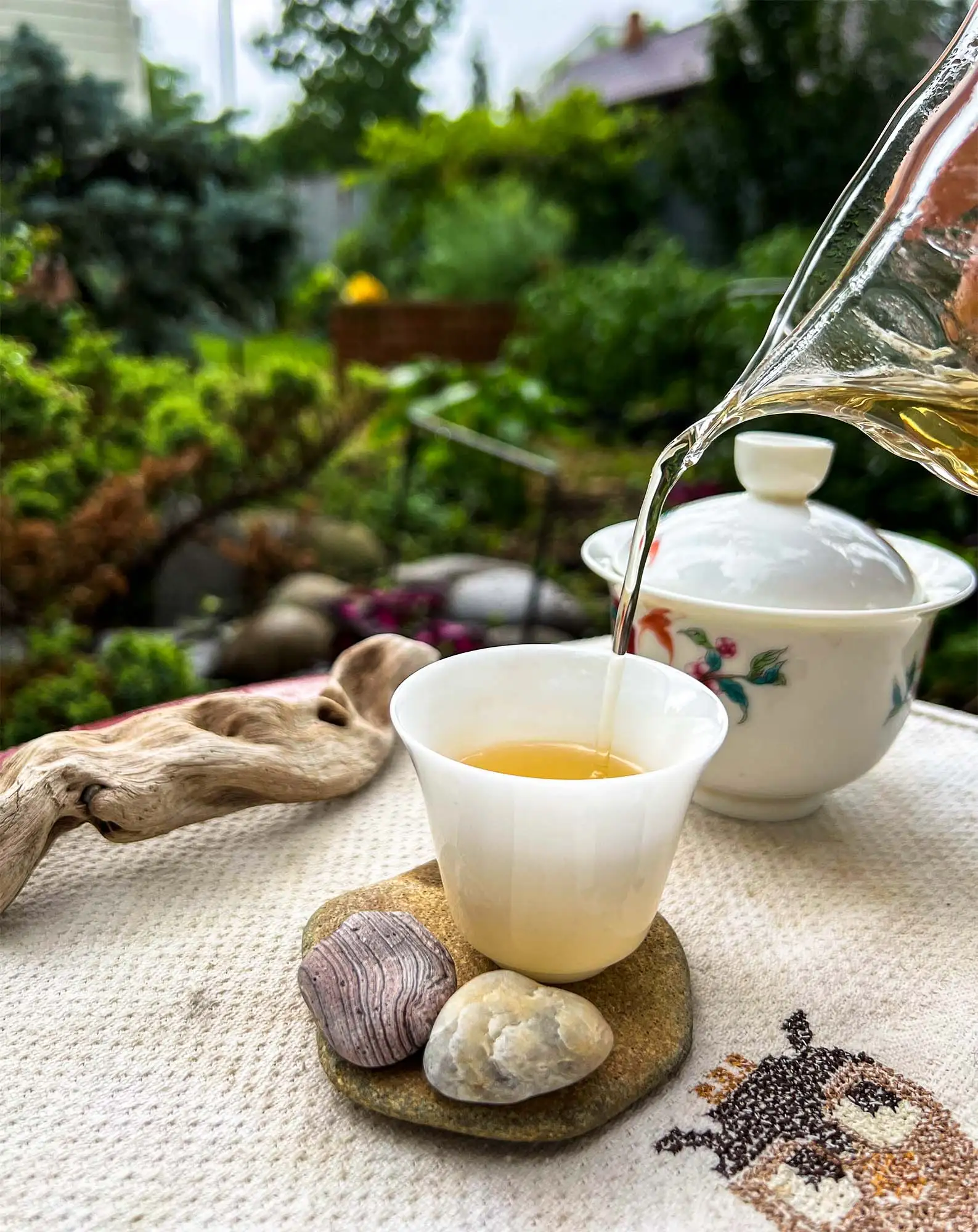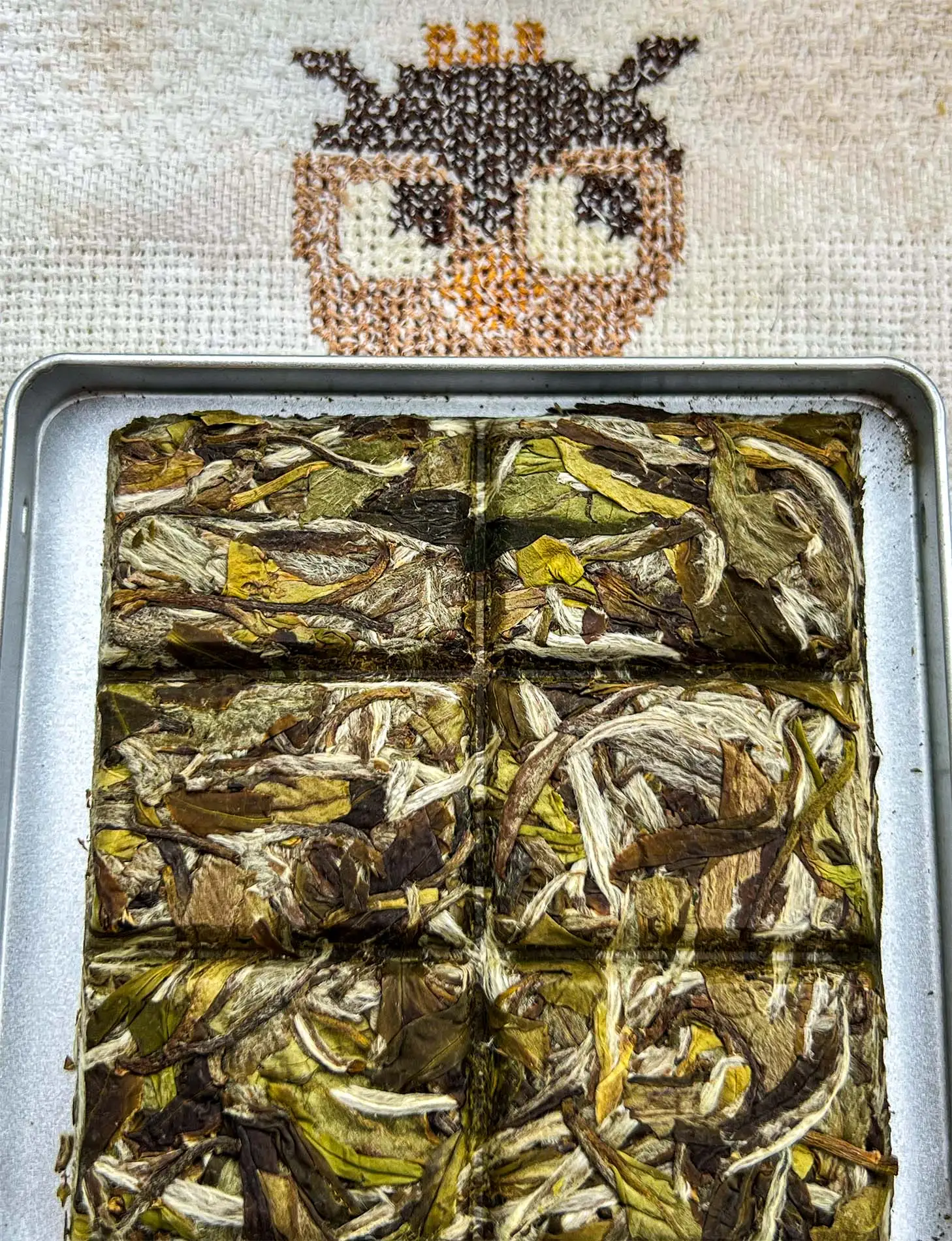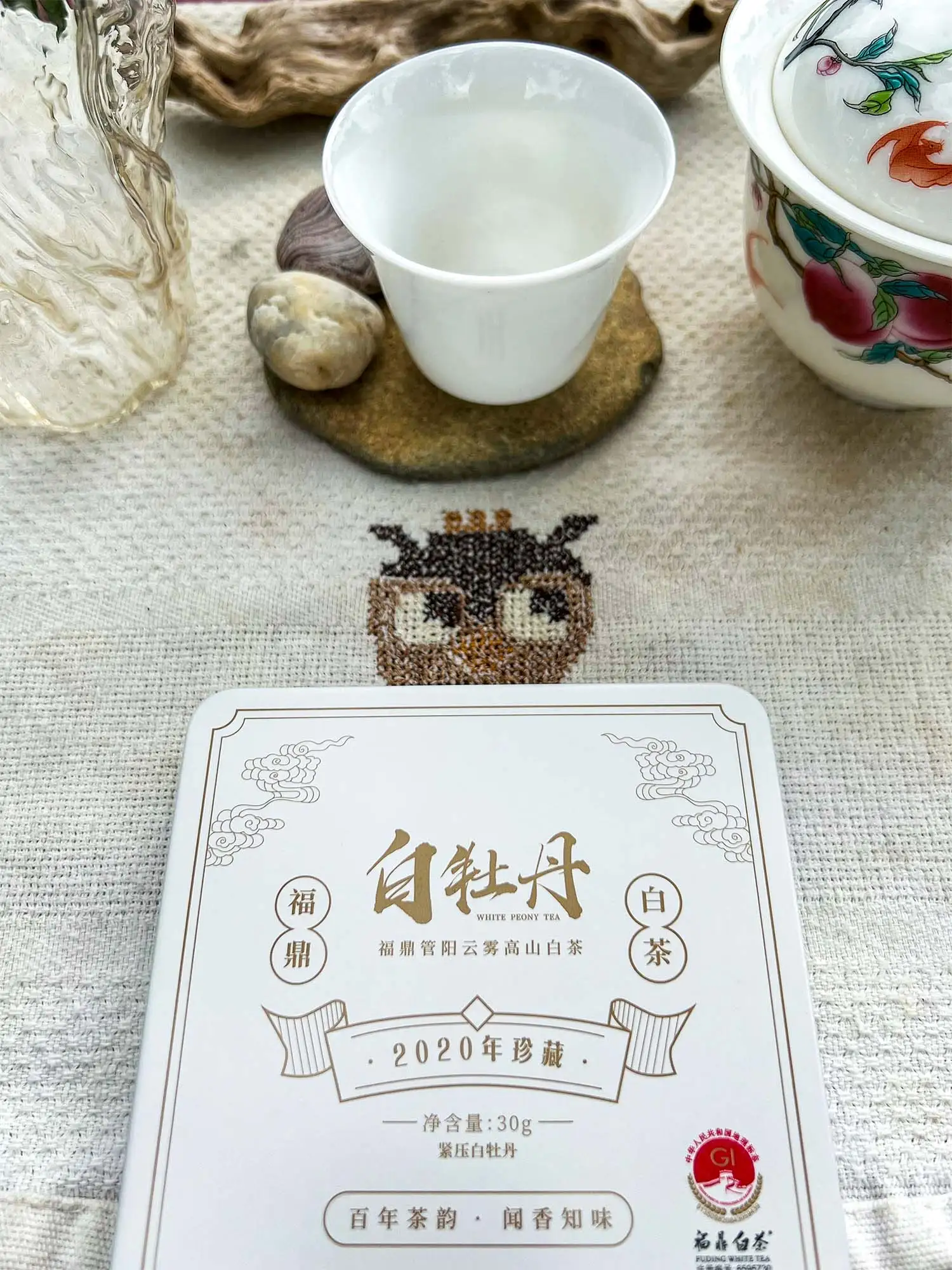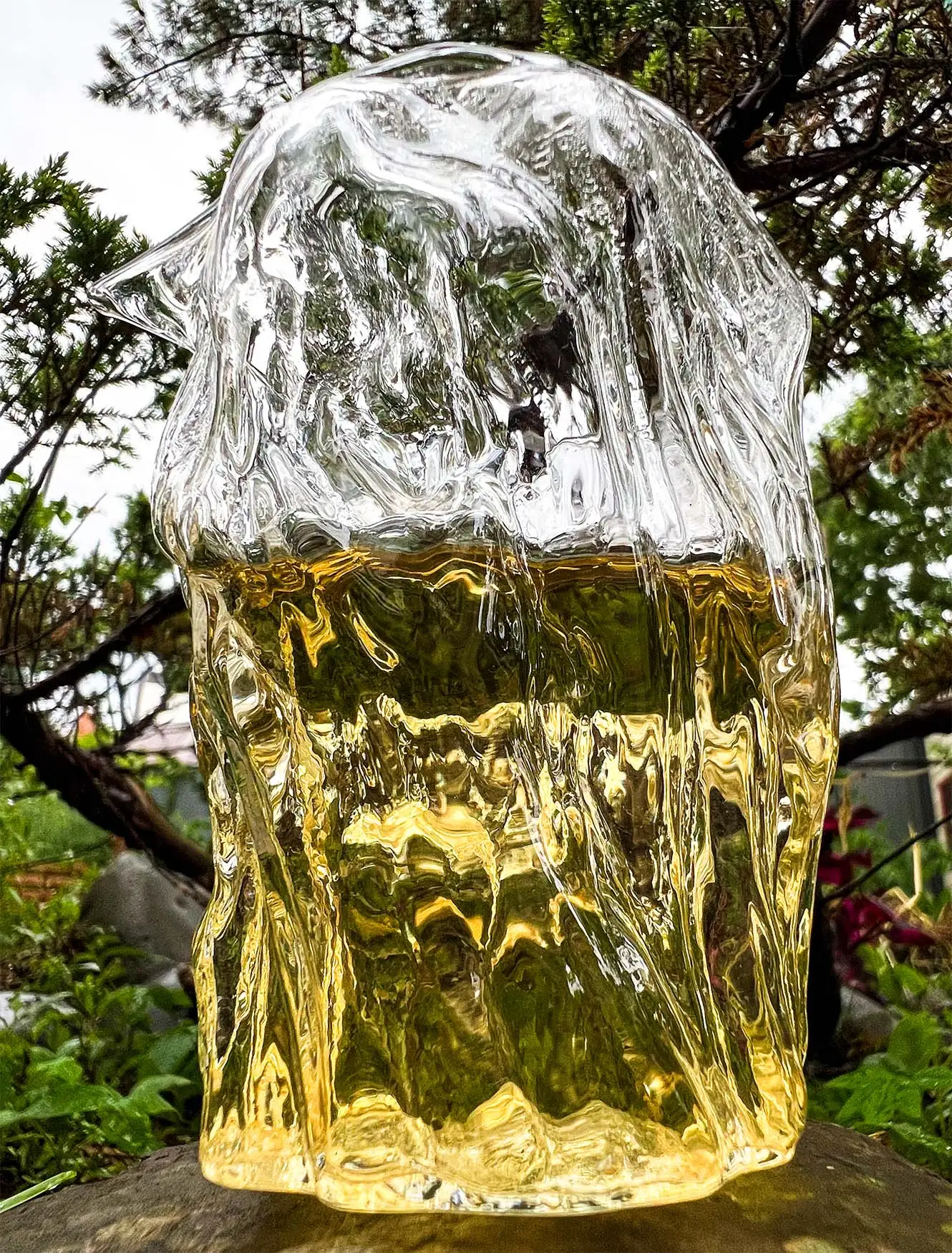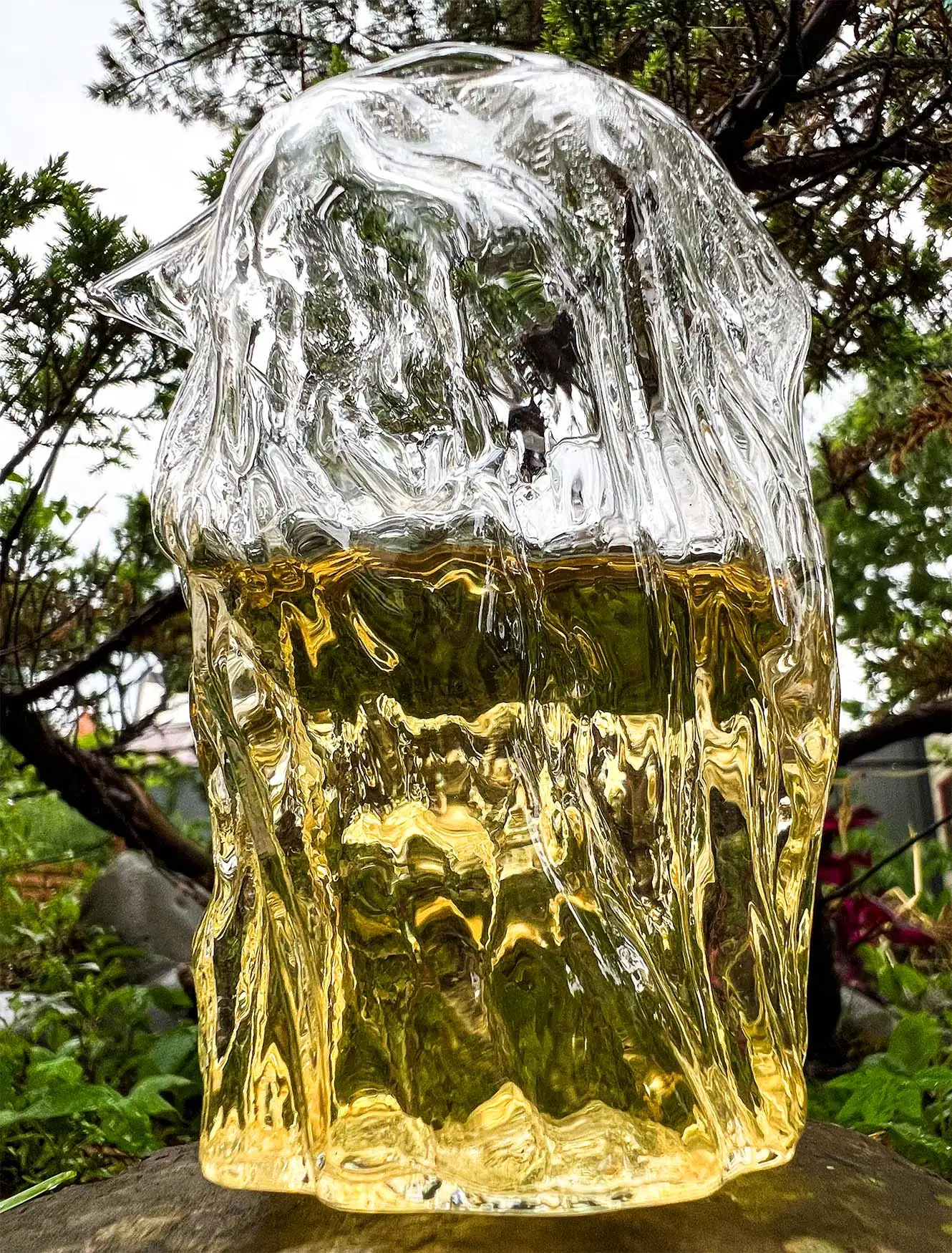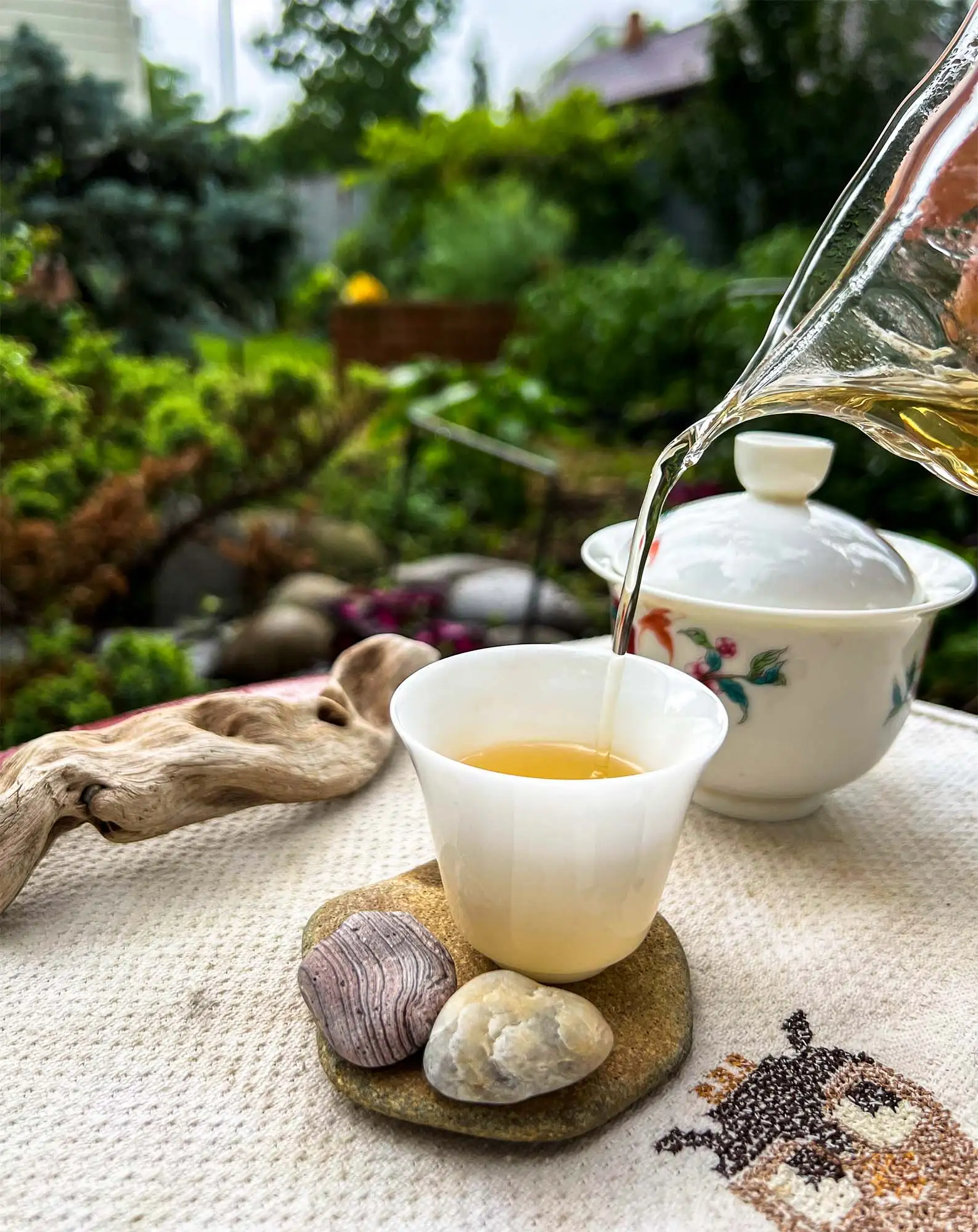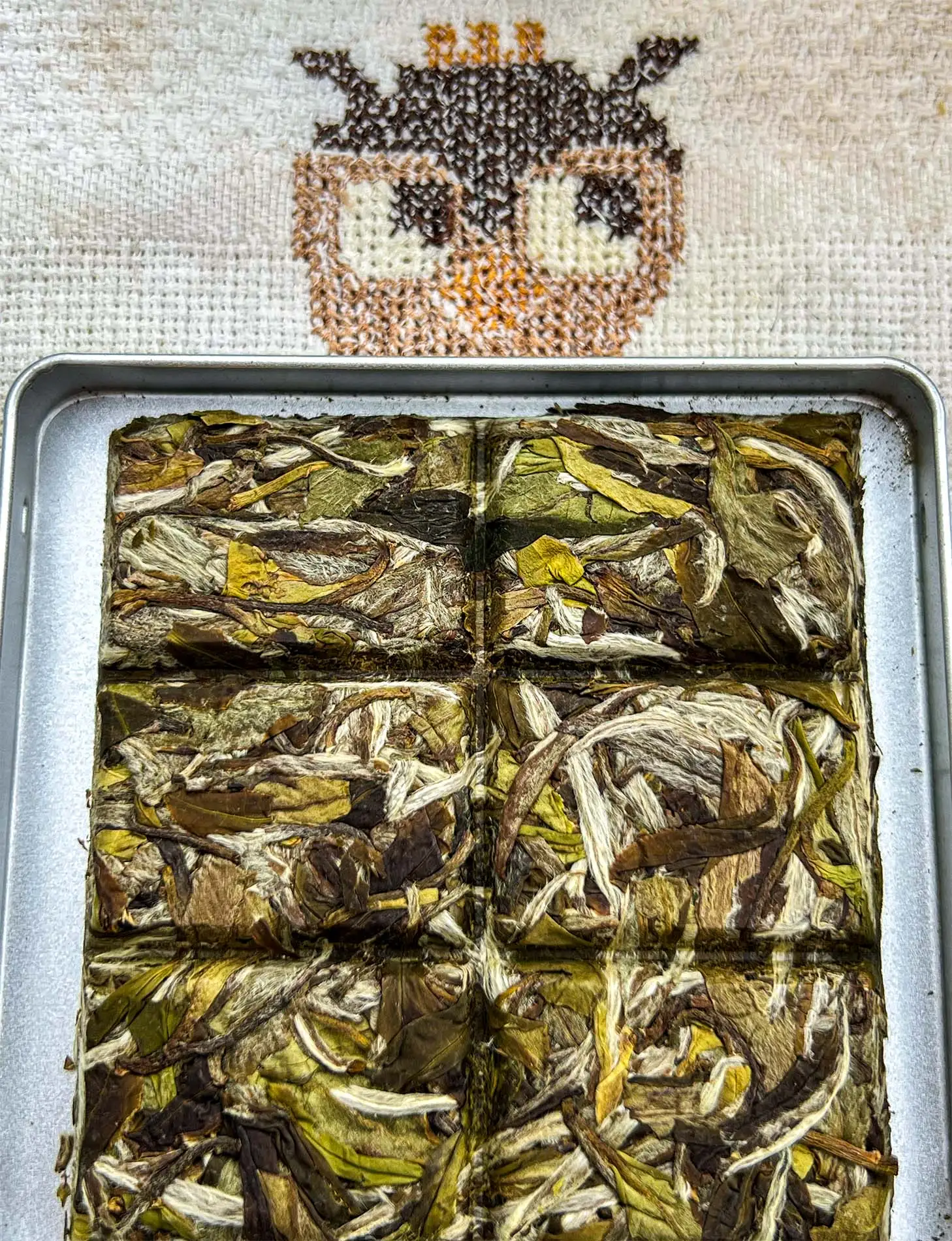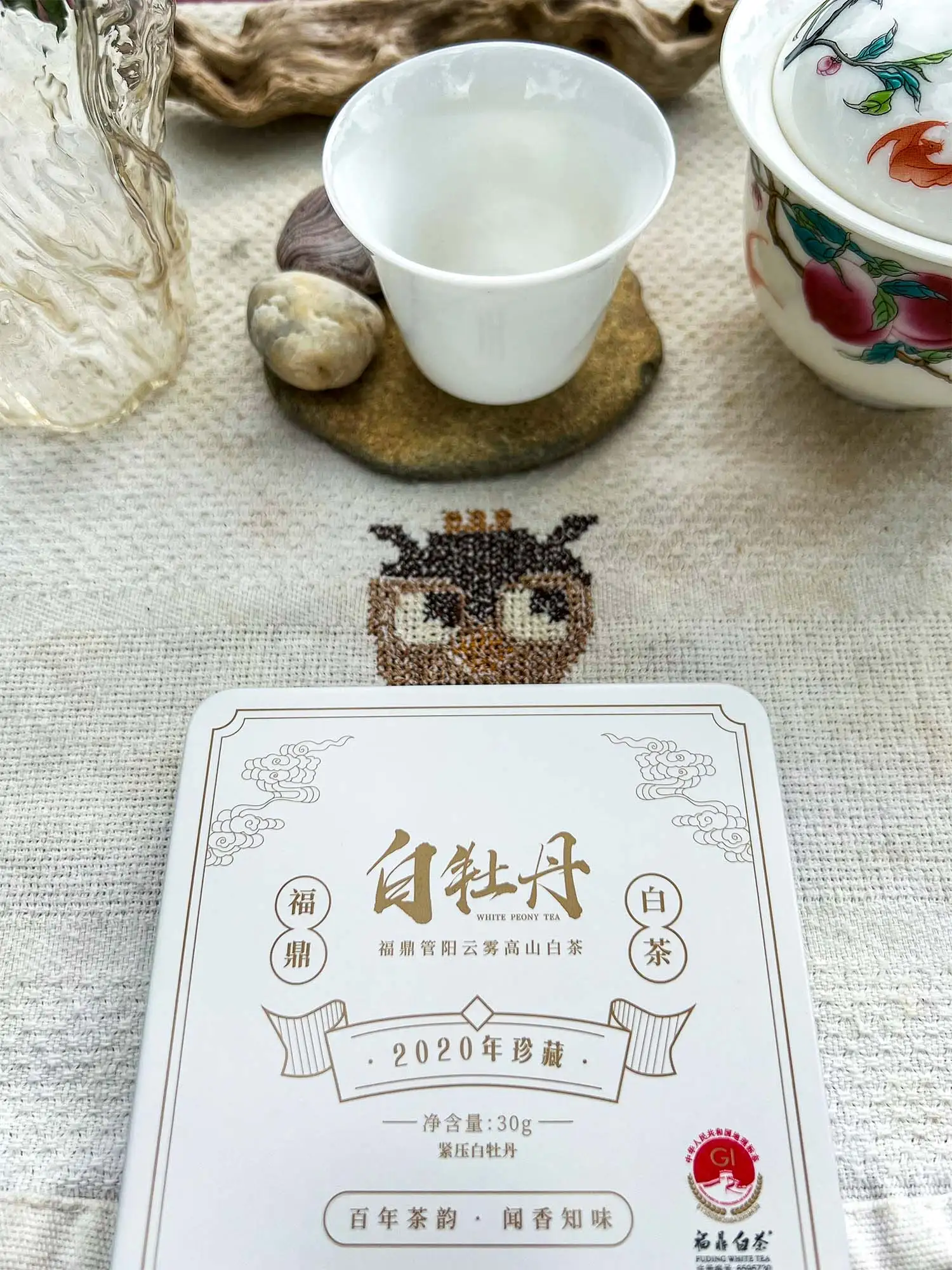Bai Mu Dan and the Soft Water
On this misty day, my brother showed me a spring outside the city, where we filled ourselves with plenty of soft water. To test the matter, I chose a “gift” white tea my father had brought me from China. Let’s see what the Chinese mean by such a label 👀
Theory 📚
Bai Mu Dan (白牡丹), translated as “White Peony,” is a tea originating in northern Fujian province, specifically the counties of Fuding and Zheng He, where production began in the 1870s. The raw material for this tea is harvested in early spring, selecting young flushes (the top bud + the two nearest leaves) from tea bushes of the Da Bai Cha (“Large White Tea”) and Da Hao Cha (“Large Hairy Tea”) varieties. Both of these cultivars begin to sprout earlier than others, already by the end of February, and their buds and leaves are covered in a dense white down, which protects the plant from cold. However, this fuzz disappears quickly, making it crucial not to miss the harvest window, which runs from March 15 to April 10.
Moreover, early spring in this region brings a marked contrast in temperature: during the day, the average reaches about 20 °C, while at night it can drop to around 5 °C. This factor leads the plant to produce amino acids and a wide spectrum of tea compounds during the warm day, while the cold night slows its metabolism, “sealing” the nutrients inside the leaf.
Since this is white tea, processing is minimal, which allows all vitamins and beneficial properties to be preserved: the leaf is withered through alternating sun and shade fermentation, lasting from 48 to 72 hours in total. In the absence of sun, the raw material can be dried in ovens at very low temperatures (≈40 °C). The fermentation level of the finished product is only 5–7%. As there is no rolling whatsoever, the leaf retains its natural form.
About the Tea ☕️ • Harvest: 2020 • Origin: Fuding County, Ningde Prefecture, Fujian Province
The processing style is Qing Xiang (清香, “light fragrance”), visible in the light-green color of the leaf. The alternative style, Nong Xiang (浓香, “strong fragrance”), involves warm-air baking, which results in a darker color due to greater fermentation.
Such tea is rarely pressed, but this is precisely one of those cases — the compression is light and delicate, the brick comes apart effortlessly.
Aroma: juniper, pine resin, blackcurrant leaf, white chocolate with strawberry, celandine. The aroma is soft and warming.
Taste: sea buckthorn, schisandra, apricots, and peach. On the exhale, as in the cha hai, sage and meadow herbs become noticeable.
The five years of aging are quite evident in the medium-strong oiliness and the smooth flavor. However, the liquor is not at all astringent — on the contrary, salivation (shengjin) is distinctly pronounced, and the infusion quenches thirst beautifully.
Caffeine content in Bai Mu Dan is lower than in other teas, and so the effect is gentler — but, I assure you, no less transporting, meditative. After finishing my infusions, I went with my dog to the sea; unlike my furry companion I didn’t dive in, but nonetheless I drifted pleasantly, wrapped in the soft down of the buds.
Equally transporting music 🌊
